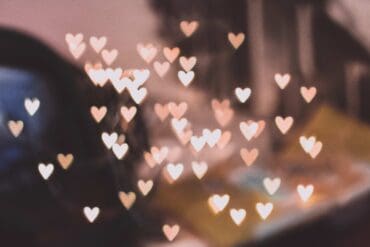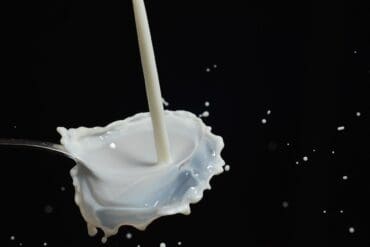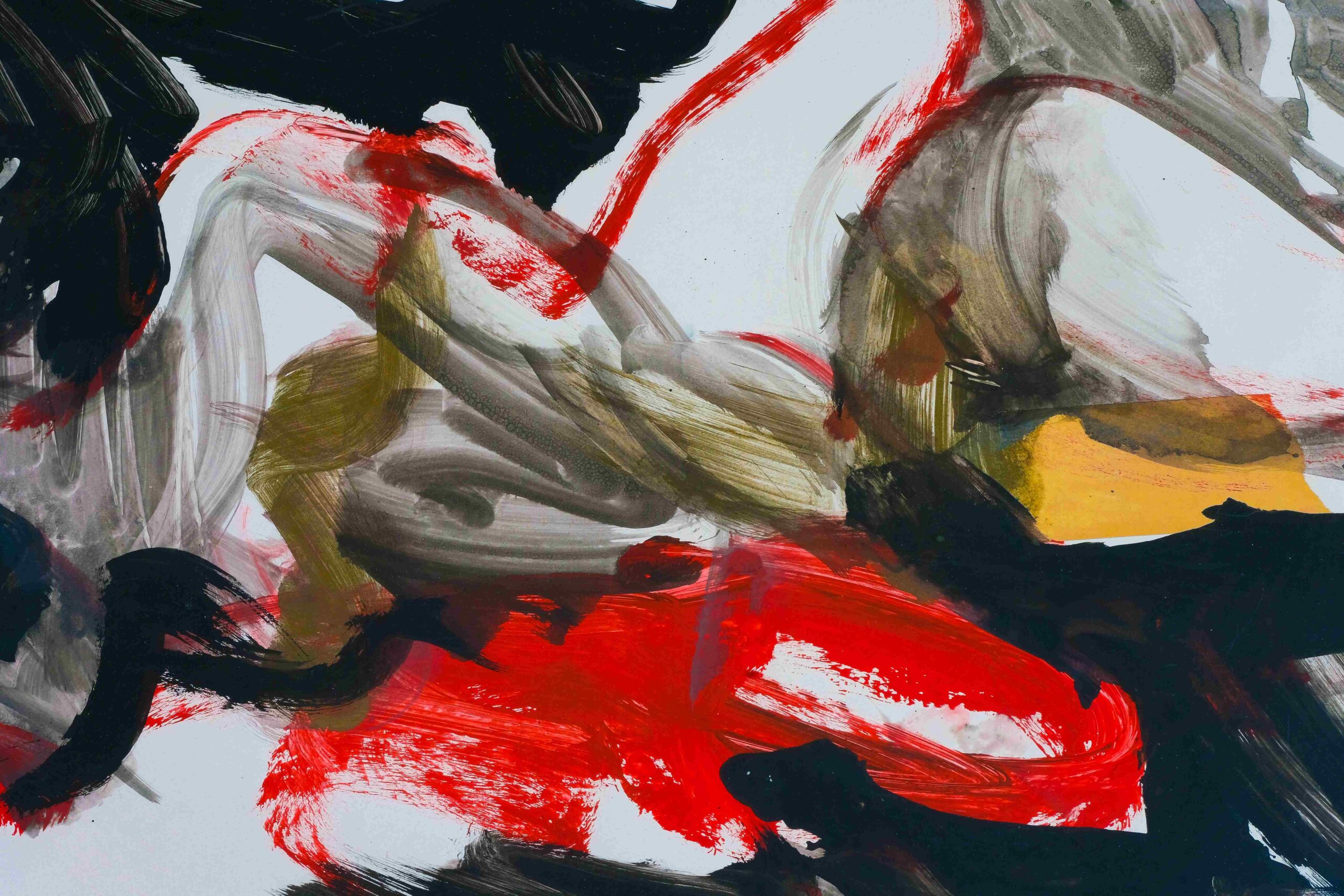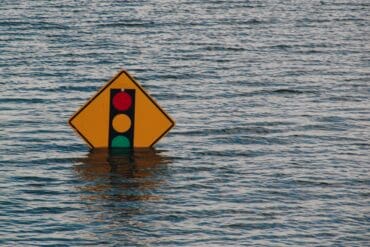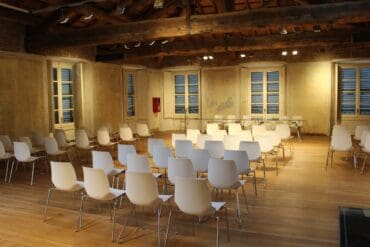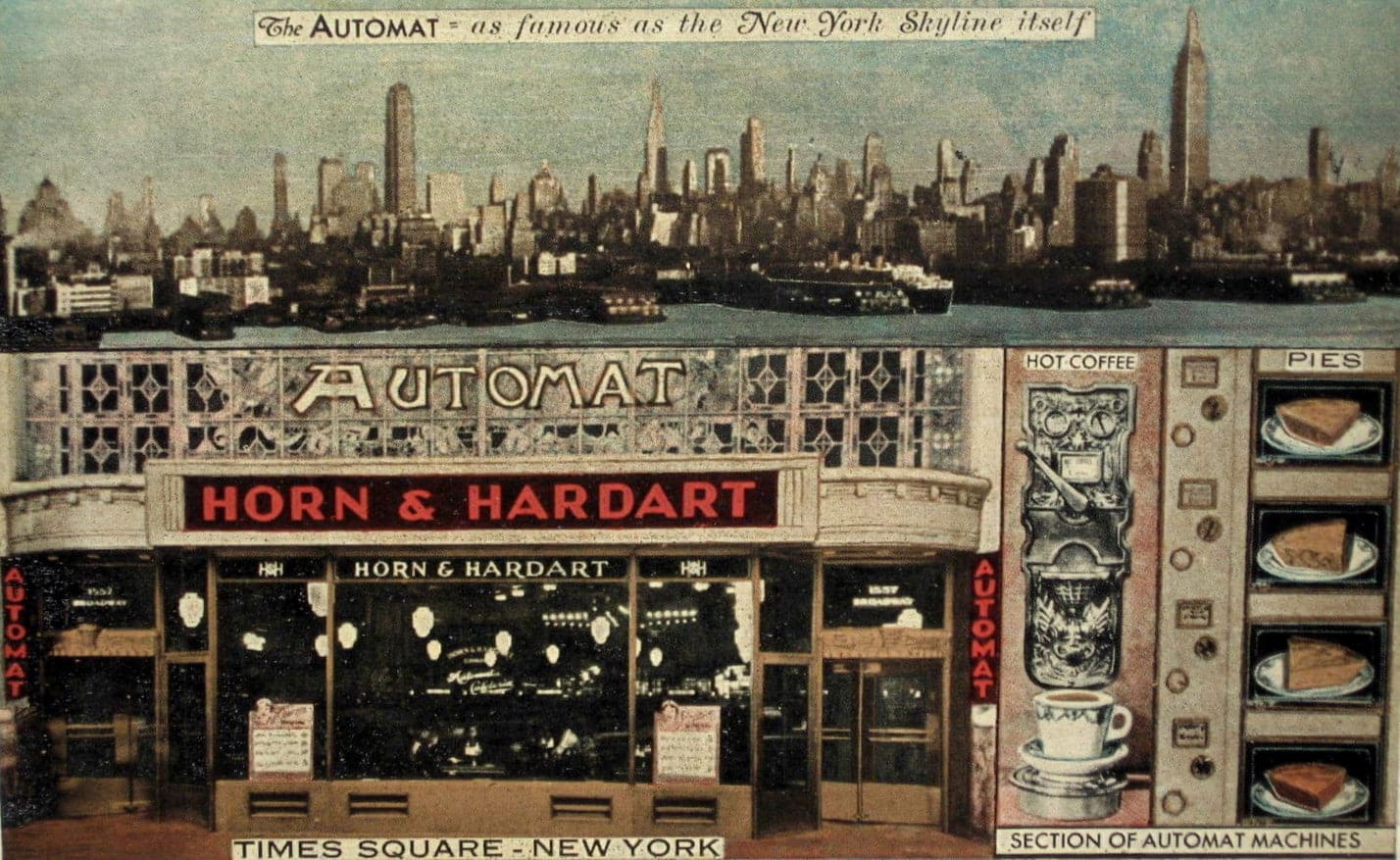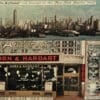Poetry Helped Me Reclaim My History: Poems of/from Photos
Author’s Memo
Some time ago I heard a friend, poet, Cecilia Wolloch read; she said (I am paraphrasing) “I am going to read a poem written about a place. I was distracted and didn’t think I noticed anything. It seemed as if I wasn’t really there.”When writing the poem, she continued, “I realized to my surprise I recalled many intricate details.” Well, I could say the same thing regarding a decade of my life.
This decade is the culture-rich and revolutionary one of the sixties. Autoethnography comes into play as my experience or might I say re-experience of the sixties took off from the remarkable photos in “Anarchy, Protest & Rebellion,” assembled by Fred W. McDarrah. What started as an aesthetic and enjoyable examination of historic photos became the subjective ride into the world of these images. These poems are an excursion into the personal, cultural and political climate of the 1960’s prompted by these rich depictions.
The start was the image which was iconic in itself. The photos were from the Village Voice and conveyed the counterculture of the 1960″s. I entered the photo from a “neutral” point of view, sometimes participating in the action of the scene and at other times consumed in a memory, feeling or event guided by (to different degrees) the image. The image could be of a person, event or a place or all the above.
“Autoethnography comes into play as my experience or might I say re-experience of the sixties took off from the remarkable photos in “Anarchy, Protest & Rebellion,” assembled by Fred W. McDarrah.
More often than not I was familiar with the location, the event or the people depicted, but like Cecilia I didn’t think I was fully present. I crossed paths with many of the people in the photos. I was at several of the demonstrations chronicled in the book. There are photos of the “Bread and Puppet Theatre,” a group born out of the protests to the Vietnam War. I performed with them at the Fillmore East. There are photos of The Living Theatre. I saw all their productions and met a few of the members. One member became a close friend. There is a photo of Tennessee Williams. I had the good fortune to meet him when I was performing on Broadway. There is a photo of Abbie Hoffman. I played him in a play and we later became friends.
There is a photo taken at the “Church Disco.” My girlfriend actually did work in the coatroom. In “Hollows,” I was very aware of this scandal and horrible conditions at Willowbrook caught in this photo; I had been working with autistic children at the time. (mot included in this group of poems) I was at the Worlds’s Fair in Queens referred to in “Subterranean,” Well on and on my connections became apparent and looking at the photos ignited the realization: I played a part in the cultural and political tapestry of that time. I was not a lead player but I participated. The fusion, of both objective investigation and personal exploration was evident.
“Seeing these photos and writing these poems helped me to own my experience.
From Stonewall Inn to Al Pacino in his first play, to Woodstock, to the Be In’s in Central Park, to cuisine on the lower east side. to Muhammad Ali and the protests to the Vietnam War, these photos explore them all with the backdrop and the sometimes, lead player, “New York City.” In essence I felt alienated during that period in my life. I might have been confused or emotionally distant but I did take note of what was around me. Seeing these photos and writing these poems helped me to own my experience. We have all heard people say “poetry saved my life.” In this case it helped me reclaim my history. I believe the dynamic taking place was autoethnography, a hybrid of my investigation of the 1960’s coupled with my personal experience.
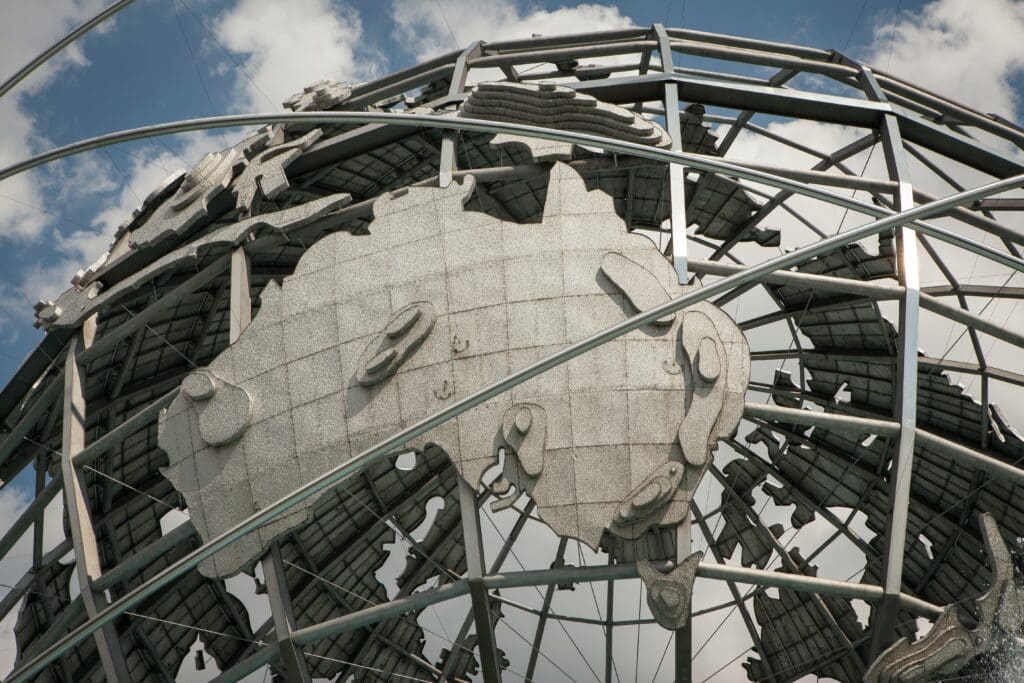
These are poems in response to photos in “Anarchy, Protest & Rebellion,” assembled by Fred W. Mc Darrah.
Photo, p. 217
Unisphere sculpture by Gilmore D. Clarke was
The centerpiece of the New York World’s Fair, 1964-65
SUBTERRANEAN
The pavilions, rides and global
contributions attracted
little of my attention
and I am sorry to say
nor did man’s flight to the moon.
The concoction of this World’s Fair
where the Unisphere rules—
and still does—
in Flushing Meadows, Queens
where for a few months
countries got along,
borders porous;
water fountains lit
in the background,
with elevated towers
lifting Robert Moses and crowds
to heights
left me in a crawl.
Tangled, earthbound,
with a singular periscope,
I tracked nothing
but myself.
This photo cuts
off the sign,
“Carribean Pavilion.”
We puzzle over ribbean avilion.
Names, severed.
Meaning lost.
I rarely wandered
above 14th street.
Photo, p. 252
Sal Mineo at a play rehearsal, August 21, 1969.
AS IF
Sal Mineo with a cigarette hanging
from his mouth, in an unbuttoned
denim shirt— yes, the boy who died
in James Dean’s arms,
the boy who followed
him and Natalie Wood around,
who stood for every kid
who longed for cool parents.
Sal said, “Hi, Paul.” Sal Mineo, said, “Hi Paul.”
“Hi Paul” shot out of celluloid,
as if we were both in Rebel Without a Cause.
Sal, backstage, said, “Hi,
Paul,”
as if we were friends as
I left my dressing room
and although
he was killed in the film, he seemed
to be resurrected to greet me.
Soon the police would arrive
at the Morosco Theatre
on 45th Street just west of Broadway.
Surely they would shoot my brother Sal
again and then hopefully shoot me.
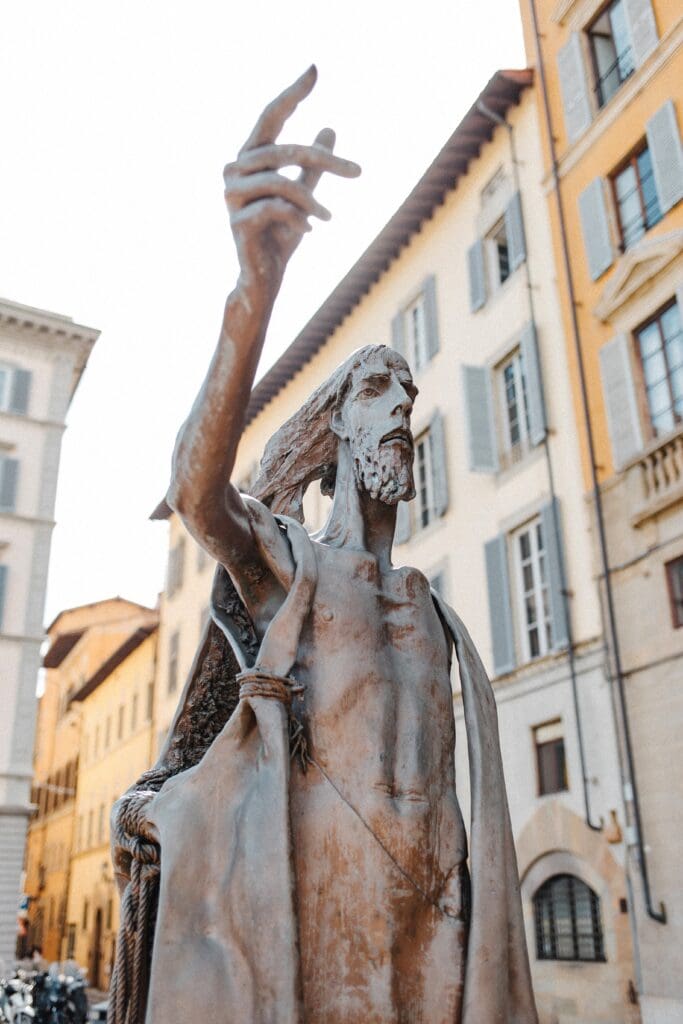
Photo, p. 108
Curator Frank O’Hara in the Museum
of Modern Art garden, January 20,1960,
with Auguste Rodin’s “St. John the Baptist, Preaching”
FIFTY-THIRD BETWEEN
FIFTH AND MADISON
There’s Frank O’Hara in the same
posture as the sculpture,
hands, legs and fingers in perfect sync,
as spontaneous
as his verse.
I remember this spot
in the Museum
when entry was free
and I would bite
into an apple
from a bowl
of Cezanne’s fruit arrangement,
stain my lips with color,
murder an innocent
with Bruegel,
ogle women
from multiple angles
with Picasso,
soar in oil and clouds,
as familiar
as the crannies
of an alley
where I played Ring-a-levio
as a boy
when my breath
was short
from excitement:
the make-believe
that seemed
so real.
I’d go down
into the museum basement
for a Louis Malle film
or Goddard:
steal a car
with Jean Paul Belmondo,
preserve the severed hand
in a jar of formaldehyde
— of a dear, dead friend—
set it on the shelf
next to a few oblivious books
in what’s the name of that Max Ophuls film?
No it wasn’t Ophuls.
Give me a minute…
…Jean Vigo, L’Atalante.
Photo, p. 100
A crown of daisies, Central Park,
April 14, 1968
EAST VERSUS WEST
At the BE-IN of beads
and acid. We are all one.
It was confusing
with the rage
of so many years
beginning to surface
while love climbed the bark
of every trunk
and me dissolving into atoms.
The lamppost as holy
as a maple tree
with ancient Indian patterns
talking about un-self, no borders,
and chit-chat about surrender.
Everything stripped
from the word assigned to it.
Revealed.
The terror of last night could be
overcome by smashing dishes
or seen in burgundy, blue
and violet prisms
contracting and expanding….
Photo, p. 329
In “three days of peace and music,”
Over thirty bands entertained from sunup until sundown,
August 16, 1969
IT TILTED THE ORBIT OF THIS PLANET
The tops
of heads, frame to frame,
roll and sweep along:
the festival known as Woodstock, August 1969,
as studied as the invasion of Normandy.
I’m not the mustached guy strolling towards
the lens
or the infant getting his diaper changed
or a boy in a white T-shirt
with his back to us.
No, I am outside the frame in a VW Bug
with four others, voting whether
to continue through mud
with two miles to go
to this photograph.
It’s one to one.
Lightning.
Rain.
Everything soggy.
Crosby, Stills, Nash, and Janis
share umbrellas.
The Who erupt in
a downpour.
Hendrix will destroy
his guitar. The folk singer
with the lisp is lost
in his notes, the one
who had the crush on what’s-her-name?
The tally is two to two. I break
the tie to make
the U-turn.
I didn’t know I’d
see the film.
I didn’t know
I’d see this photo.
I didn’t know.
It was 1969.
I knew everything
Photo, p. 17
The Bread & Puppet Theatre
in the first Vietnam protest,
Washington Square, March 15, 1965
The three-storied puppets,
hands bigger than heads and gowns
to the ground, a 1962 Mercury
parked to the side
with slanted front lights
watching it all.
The Bread and Puppet Theater
parades down MacDougal Street.
VIETNAM is bold and hand printed
on the chest of a puppet,
blind as the war,
and inside the puppets
are puppeteers who follow
instructions from the creator, Peter Shulman,
rather than a drill sergeant.
A musician with a papier mâché-skeleton face,
meant to spook us into
sanity, beats a marching drum.
A fire hydrant in the lower right hand
corner listens to the pleas for peace.
I want to mention what happens
under the drapes of these oversized
puppets, how we both maneuver
them and fondle one another,
stroke each other’s genitals
while we protest
while our classmates from high school
disappear.
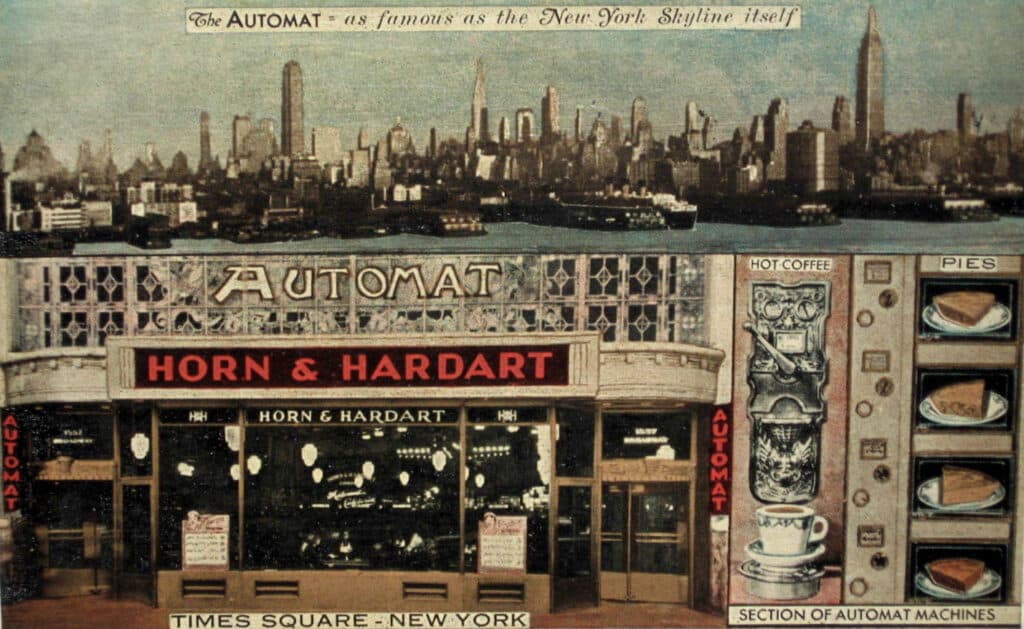
Photos, pp. 174-175
The last Horn & Hardart, West 57th St.,
June 19, 1960
GONE
I was beside myself to hand a dollar bill
at the marble booth at the center of
the cafeteria and witness the Vegas-like
agility of Mary, who shuffled coins like cards,
tossed twenty cool nickels my way.
Here are photos of the gold gargoyles,
marble, glass, and the spigot with the head of a dog,
tongue hanging. Just crank the handle
above and, for five nickels, place your cup under
for coffee, then proceed as four nickels
will open a small glass door where pies
prostitute themselves. Temptation is legal
and these cream pastries, chocolate
and lemon meringue, parade behind
the see-through windows. Take your pick
in the automat where men wear hats
and eat off trays and kids like me
were off our leashes. Baked beans,
macaroni, slot machines and swinging doors.
Touch what you like for a few easy nickels,
everything within reach as we skipped
from showcase to showcase. There’s
a grilled cheese sandwich. Dripping.
There’s Bessie putting the third nickel
in the slot, eye level with apricot pie.
She wears a wool jacket, her hands
are still chilled, but so eager.
Photo, p. 63
Hot knishes all day long at
Avenue C, November 7, 1964
BROTH
We’re on avenue C and 6th Street,
“Knishes 15 cents.” A man with a coat
to his knees grasps the handles
of his cart on a cobbled street,
gloriously irregular in its line-up of stones,
six blocks from where my grandmother
lived on 12th Street between B and C,
that tenement apartment tucked
in the 3rd floor walk-up where I’d enter
into a museum of smells
with the samovar on a top
shelf, as seductive as the casbah,
and a bathtub in the kitchen;
a bowl of chicken soup,
with an occasional eggshell
lost in broth, welcomed me.
This is the Lower East Side with fire escapes
above treetops, always above,
witnesses to the changing demographics.
Not burnt, please. Is it fresh?
Who made these? Hot but not too hot.
A kasha one, please. Yes, with mustard.
Photo, p. 90
Tim Leary sits with Allen Ginsberg and Richard Alpert
at the Fillmore East, 1966, the event was
a“psychedelic, religious celebration.”
STAGELIGHT
Tim greeted me at Millbrook,
his LSD farm in New York
and he stood like a waspy god
in sandals, as friendly as a senator
and he had my teenage vote.
At the Fillmore I watched him
describe playing baseball, how acid
slowed the pitch and in the stitching
of the ball he found the history
of the game, contemplated the peace
it embodied, the angles it celebrated
and he had time to reflect
on the Big Bang as he swung his bat
with perfect timing and swung his bat
in harmony with the rotation
of the planet and with his swing
creation was explained and so much more…
Mic in hand, legs nearly crossing,
Allen Ginsberg to his left,
while bombs dropped
on Cambodia, Laos, Vietnam
and darkness
in this photo except for them.
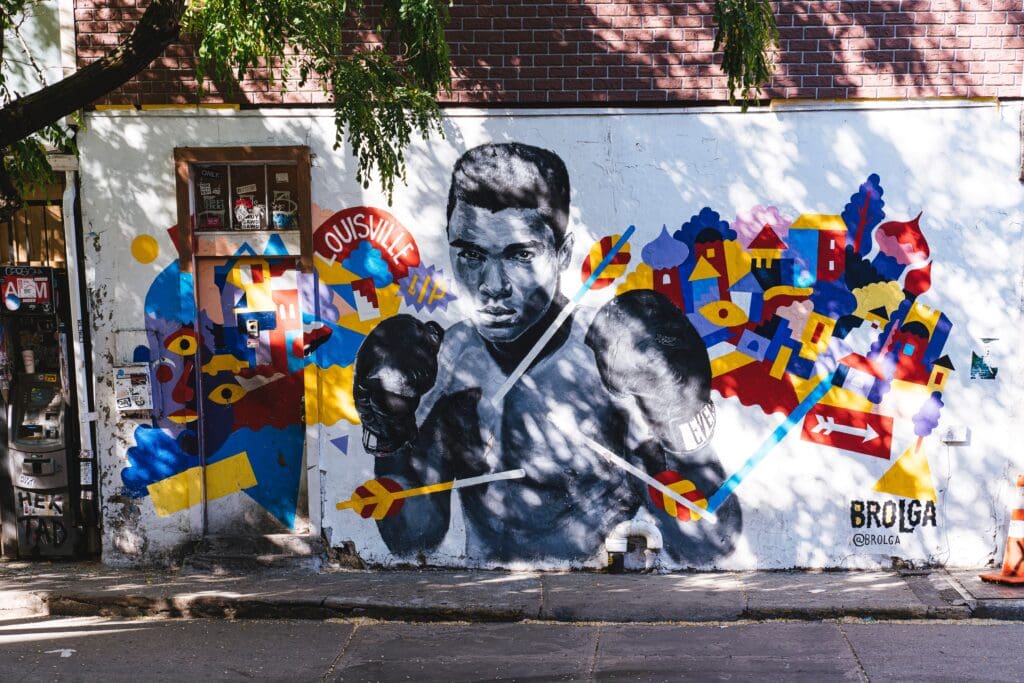
Photo, p. 1
Heavyweight Champion Muhammad Ali
in basement of Madison Square Garden,
March 16, 1967
ROPE-A-DOPE
Ali in a robe, leaning
on the ropes, fatigued,
the year he refused induction,
his mouth closed.
My father would love
his closed mouth
free from braggadocio
and rhyme, as unimpressed
with Ali as he was with me.
I remember when
I said Johnson and Nixon
were the same, thinking of
the blood in Vietnam,
and my father spewed disgust.
Was it really disgust at
his father who deserted
or his mother who deserted
her sanity or me who deserted
his opinions?
I met Ali in Santa Monica when
there was peace in the east and
he was shuffling and dancing.
I leaned like him on the rope
outside the ring and he smiled
and waved me in.
I said I like it outside
then climbed over the rope.
Ali circled. I didn’t think he even
noticed my presence.
He flicked a jab and followed
it with a light hook and a cross;
I did the rope-a-dope and he
recited: you’re a good learner friend,
but you will be out in the end
and that’s all I remember.
Credits
Featured Image of Horn&Hardart Times Square New York circa 1939, public domain from Wikipedia
Photo of the Unisphere sculpture close-up in New York by Reno Laithienne for Unsplash
Photo of Auguste Rodin’s “St. John the Baptist, Preaching” in Italy by Max Avans for Pexels
Image of Horn&Hardart Times Square New York circa 1939, public domain from Wikipedia
Image of Mohammad Ali by Nelson Ndongala for Unsplash.
Learn More
New to autoethnography? Visit What Is Autoethnography? How Can I Learn More? to learn about autoethnographic writing and expressive arts. Interested in contributing? Then, view our editorial board’s What Do Editors Look for When Reviewing Evocative Autoethnographic Work?. Accordingly, check out our Submissions page. View Our Team in order to learn about our editorial board. Please see our Work with Us page to learn about volunteering at The AutoEthnographer. Visit Scholarships to learn about our annual student scholarship competition.
“Interrupted by the Sea,” Paul’s second collection of poetry was published by What Books Press. First collection: "Chemical Tendencies,"(Tebot Bach). Paul produced “Why Poetry” on Pacifica radio in L.A. . He taught Poetry at L. M. U. and Beyond Baroque. Paul works as an actor.


